So. You’ve finally done it. You bit the bullet and bought an espresso machine. Welcome to the dark side! We have endless morning lattes, mid-afternoon doppios, and late-night cappuccinos. Now you’re going to want the best beans for making espresso!
It’s exciting being on the other side of the coffee bar and making your own espresso drinks. But with great power comes great responsibility. You might have a few questions as you’re diving into the world of at-home espresso brewing.
Can you use the same beans to pull a shot of espresso that you do to brew a cup of coffee in your French press? Will a light or dark roast work better? Does it matter how the beans are roasted?
It’s natural to have many questions about what beans you should be using and how to make your espresso. We’re here to help you master the art of at-home brewing – so you can pull the perfect, most delicious shot every single time.
By knowing a few critical tips and what beans are best for espresso, you’ll be pulling shots and making drinks like a pro in no time.
Before we get into the best beans for espresso, I strongly encourage you to check out our article, Easy Ways to Level Up Your Home Barista Game. This will show you how to make all of the drinks and equipment you’ll need.
Do You Need Special Coffee Beans for Espresso?
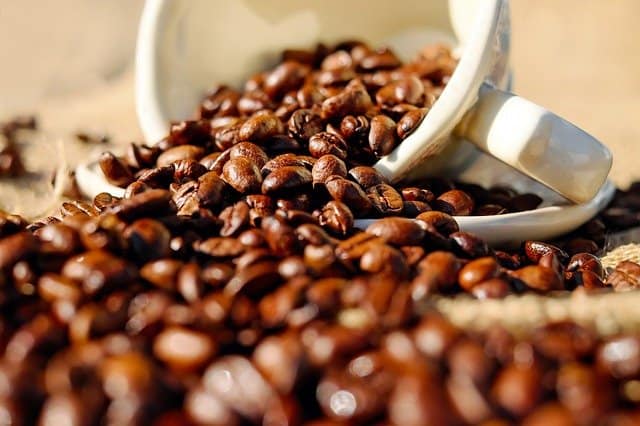
Contrary to popular belief, espresso beans are no different than coffee beans. While people often think that the beans are harvested differently, they’re actually the same. There’s no unique “espresso” bean.
While the beans may be the same, the difference comes largely down to the method of how you grind the beans and how the coffee drink is brewed.
Just as there are different kinds of coffee roasts — like light, medium, and dark — there are different kinds of roasts for espresso.
The beans also originate from different places, which can alter the flavor of the espresso.
Some roasters will have a special “espresso” roast of beans. This just means they’re roasted differently than a typical coffee roast – but you can still use those beans to brew coffee. It all just depends on the grind of the beans.
What kind of espresso bean you should buy will depend on your preference and how you want the espresso to taste. Some people prefer a more fruity, floral espresso, while others prefer one that is nuttier or chocolatey.
Do Espresso Beans Have to Be Dark Roast?

While you can certainly use any beans your heart desires when brewing espresso, some will produce a better-tasting drink than others.
Although you can use a light roast, the beans will not be roasted as long. During the roasting process, oils get released from the beans. The longer beans are roasted, the more oils are removed from the beans. This means a dark roast bean will be more oily than a light roast.
We take a deep dive into this process of oils in our article, Why Are Coffee Beans Oily?
Oils give espresso and coffee that rich, bold, deep flavor. For the ideal-tasting espresso, medium or dark roast beans will usually yield the best-tasting result.
We recommend using a darker roast to get the most full, rich flavor profile.
You can use a lighter roast bean – it may just taste a little more acidic, fruity, and floral, and not as chocolatey, nutty, and bold as espressos traditionally made with a darker roast will.
Single-Origin or Espresso Blend?
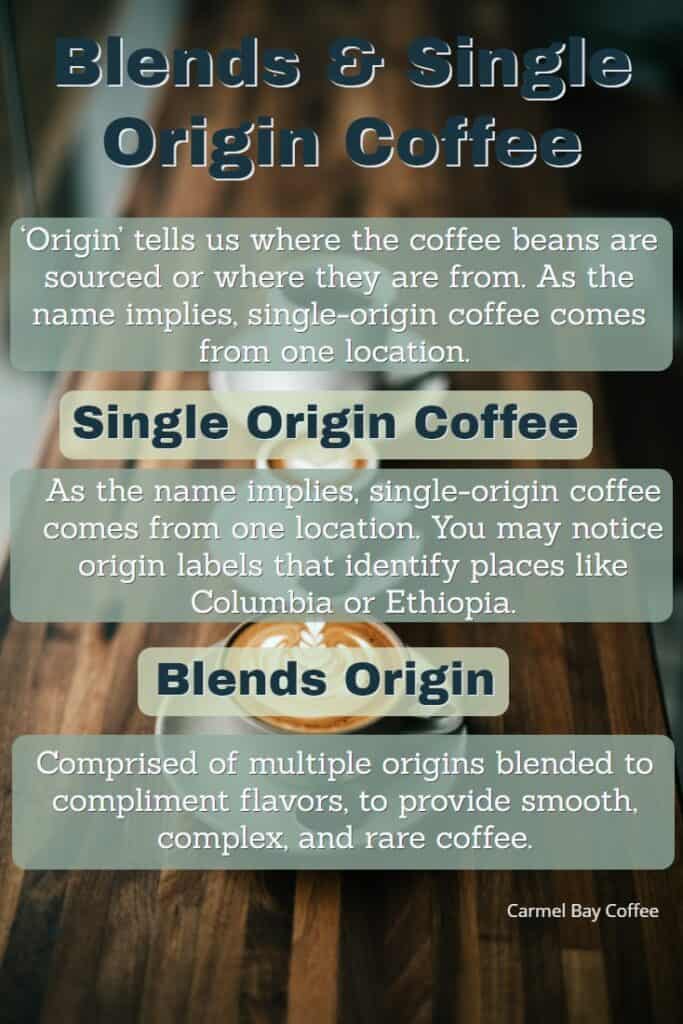
What the heck is a single-origin? What is a blend? Does it matter which you use for brewing espresso?
A single-origin (perkcoffee) usually will have a more controlled unique, identifiable flavor profile. This is because, as in the name “single,” the beans will usually come from one place. A blend, however, will have a more varied profile. This is because the beans will come from a few different sources.
You can find more information about blending coffee in our article, A Guide To Choosing The Right Coffee Blend.
A lot of it comes down to preference. A single-origin will usually have a bolder, richer profile. A blend, however, will have more balanced notes. Single-origin beans also tend to have more variation in flavor from season to season. They are more temperamental, coming from one source, and will change based on heat, humidity, and other factors.
If you’re going through your beans quickly, a single-origin coffee bean is an ideal fit for your espresso machine. These beans tend to have a shorter shelf life, which makes them perfect if you’re looking to try lots of different varieties.
A blend, meanwhile, will have a longer shelf life. This is ideal if you’re not going through your beans as quickly.
You can use either a single-origin or a blend for your espresso beans. It all just depends on preference!
What to Know About Grinding Espresso Beans
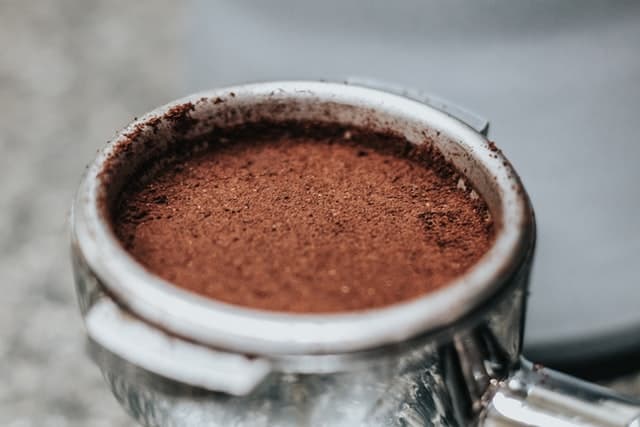
While you can buy pre-ground espresso, you’re going to get the best-tasting shot when you grind them fresh each time.
Because it is ground so finely, espresso is especially temperamental.
Things like light, heat, humidity, and pressure used to tamp a shot can affect the time it takes for espresso to pull and how it tastes.
You can buy pre-ground espresso if you need to for the sake of time, but you’re going to get the best-tasting shot if you grind it fresh each time.
If you don’t have a bean grinder, we recommend getting one. This means you’ll have more control over how the shots pull, and you can be sure you’re getting the freshest, most delicious espresso each time.
When you pull a shot, it should take around 23 to 29 seconds from when you begin letting the water flow through the portafilter to the time it takes for the espresso to finish brewing.
For example, if you’re pulling a double shot, it should take this time for two ounces of espresso to start flowing through the grounds and into your shot glasses or cup underneath.
If the espresso takes less time – like 15 seconds, this means the espresso grind is too coarse, and you need to make it finer. The water is flowing through the grounds too quickly. This espresso will often taste watery and be lacking in flavor. It won’t mix right with milk and will leave your drinks flat.
However, if it takes 35 seconds for the liquid to brew, that means the grind is likely too fine. You should adjust the grind of your espresso to make it slightly larger. This espresso may taste burnt, and it will often have a darker color.
Make sure to take a look at our article, 11 Tips To Storing Coffee the Right Way. This article will help you keep your beans fresh for the perfect cup of coffee!
Espresso Brewing Tips
When brewing your espresso, there are a few simple tips that can help make sure you’re getting the best-tasting drink each time.
Getting the Espresso Machine Ready
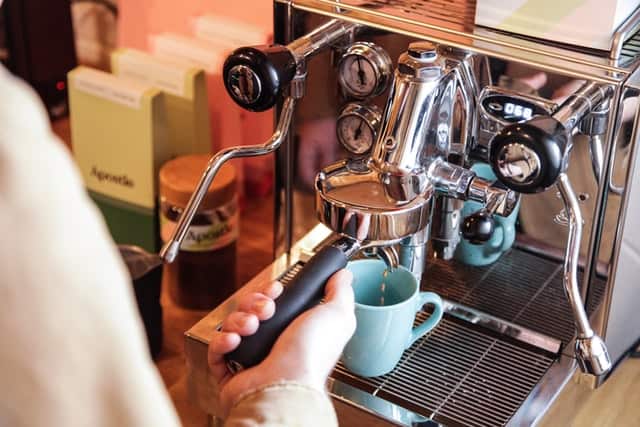
To start, make sure your machine is warmed up and clean. Turn on the machine a few minutes before pulling the first shot to make sure you’ve given it time to let the water heat up.
Ensure there are no grounds stuck on either the portafilter or the grouphead (the part of the machine where the water comes out). If there are stuck grounds, you can use some hot water and a gentle rag or brush to wash them away. You can also get cleaner for all the machine parts to make sure it’s staying clean.
Pulling a Shot
When your machine is on and ready to go, try pulling a shot.
Put the ground espresso into the portafilter basket, and tamp it with light pressure. The amount of pressure baristas say to use will vary, but the range is usually around 20 to 30 pounds.
Don’t stress this too much, as some people will have a stronger arm than others. You just want to make sure the grounds are packed tight enough that the espresso has to be pushed through with a little water pressure, but not so much that the water can’t get through at all.
How Should Espresso Look
Swing the portafilter into place, and make sure it’s snug against the grouphead. Then, use the button or lever to pull a shot. When the shot pulls, the liquid should be running in a steady stream. The colors should be a rich light brown that turns darker and has deeper notes. The liquid should be slightly syrupy.
How Long Does It Takes the Shot to Run

If it’s close to the target range, you’re golden (around 23 to 29 seconds). However, if the time is way off, try adjusting the grind of your espresso and pull another shot. It’s not a big deal if the time is a little off. If it takes way more or way less time, however, the shot can taste funky. It may taste watery or burnt.
Pulling the perfect shot is something that takes practice, nobody is a pro their first time doing anything.
If you’re making a drink with milk, you should either steam it at the same time that your espresso is brewing or add a small amount of milk to the shot when it’s done pulling.
Ideally, you don’t want to leave espresso to sit for more than around 30 seconds after the shot pulls if you’re planning to make a drink with it. This can make the shot “expire,” and the flavor may start to alter as it sits. It may start to taste slightly sour. You don’t need much; just a few drops of milk or something will help keep the drink’s flavor profile.
If your shot looks okay in color and the time is around the target range, you’re golden and ready to enjoy a nice shot of espresso.
Coffee Beans That Are Great for Espresso

The darker the roast, the more rich the espresso. We recommend using a medium roast at a minimum to brew your espresso. However, we’re fans of a dark roast.
While dark roast is best for espresso, that raises other questions about what beans are the best. Is robusta or arabica better (coffeechronicler)? What if I want espresso that’s more floral? We’ve gathered the best beans to satisfy your taste buds.
If You Prefer a More Fruity or Floral Espresso
- Ethiopian beans
Beans originating from Ethiopia are well-loved for their floral and fruity notes. These are ideal if you prefer an espresso that’s a little lighter. It’s suitable if you’re making drinks where you want a lighter, more delicate flavor profile.
- Costa Rican Beans
In Costa Rica (costaricaexperts), it’s illegal to produce anything other than 100% arabica beans. These beans are of the highest quality. Because they’re grown at a high altitude (espressocoffeeguid), they have a more acidic, light flavor. This will ensure you get a delicious espresso that’s not too heavy or bold.
We have a few great tips on how to tell good quality beans in our article, 8 Ways To Tell Good Quality Coffee Beans.
If You Prefer a More Nutty or Chocolatey Espresso
- Brazilian beans
Coffee beans originating from Brazil (homegrounds) are known for being caramely, low in acidity, and rich. This gives them a more profound profile and makes it the ideal bean for a delicious espresso.
- Italian Roast
Italian roast beans are known for being a very dark roast. This gives them a vibrant, bold flavor. These beans will yield an espresso that’s full of smooth oils and packed with flavor. It’s perfect for sipping on by itself.
If You Don’t Know What Kind of Espresso You’d Like
- Arabica beans
Arabica beans are praised for being high-quality, more than robusta. They are found in a variety of roasts, from Italian to French roasts. Although slightly more expensive than the robusta counterpart, these beans are well worth the money and will give you a high-quality espresso.
- A classic espresso roast
When in doubt, you can’t go wrong with a classic espresso roast. These beans are likely roasted for longer than a typical dark roast, allowing lots of oils to be released from the beans.
The resulting flavor is bold, rich, and delicious. Whether it’s made from a blend or a 100% single-origin arabica, the flavor will surely not disappoint.
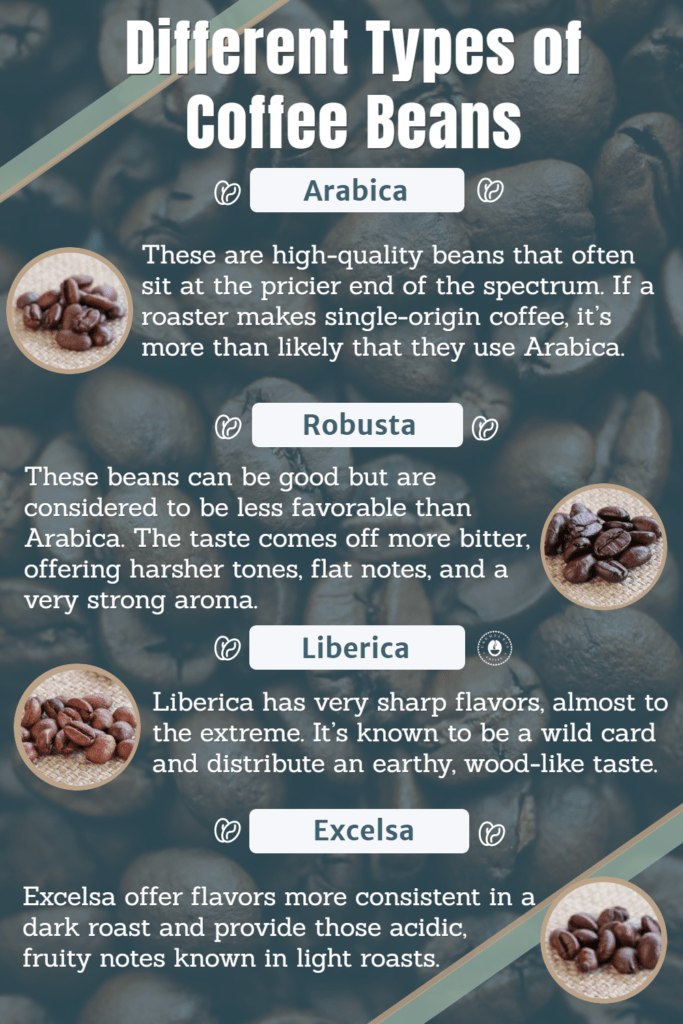
If you don’t have a grinder or have one on order and want to get started using your espresso maker, check out Illy Classico Espresso Ground Coffee on Amazon. I’ve used these before, and I thought it was great coffee. It’s pre-ground, so it’s a fine ground ready for your espresso maker.
Wrapping Up
Whether you’re a coffee aficionado that’s been pulling the shots for years, or you’re just delving into the world of at-home espresso brewing, with a few tips, you’re sure to make delicious drinks.
By choosing the right beans, you can be sure that you’re making espresso that’s tailored to your palette. Whether morning, noon, or night, you’ll be pulling shots that satisfy your taste buds and give you the caffeine boost you so love.
